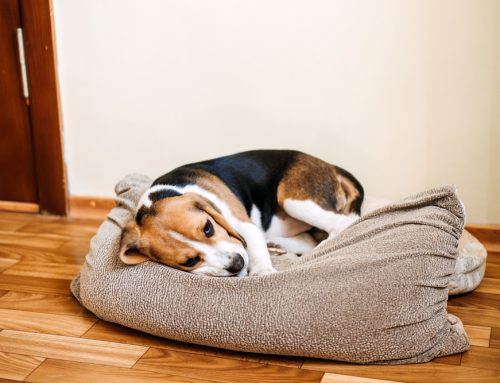If you’ve been bitten by the travel bug, you may want your pet to join the journey. Traveling with your pet can be challenging, but you can take steps to make the process easier. Our team at Willow Wood Animal Hospital wants to help by providing pointers that will help simplify your next travel adventure with your pet.
#1: Schedule a veterinary appointment for your pet
Schedule a pre-trip veterinary wellness visit to ensure your pet is healthy and travel-ready. Pets are stoic, and frequently don’t exhibit illness signs until their condition is advanced. You don’t want a preventable veterinary emergency during your trip. Our veterinary professionals will perform a thorough physical exam and routine diagnostics, such as a complete blood count, biochemistry profile, fecal check, and urinalysis, to ensure your pet is healthy enough for travel.
#2: Ensure you have the appropriate paperwork for your pet
If you are traveling across state lines or by plane, you will need a pet health certificate. If you are traveling internationally, you may need additional paperwork that proves your pet has received the necessary vaccinations or specific blood testing. You should research what documents you will need, depending on your destination, and schedule a veterinary appointment well before your scheduled departure, to ensure you can meet all the requirements before you leave.
#3: Pack appropriate supplies for your pet
Ensure your pet has the necessary supplies for the trip. Items to pack include:
- Food — Pack more than enough food for your trip’s duration to ensure you won’t have to change your pet’s diet.
- Water — Keeping your pet hydrated on the trip is important. Pack water and ensure your pet can drink frequently.
- Bowls — Bring collapsible bowls so you can easily feed and water your pet.
- Bedding — Ensure your pet has a comfortable resting place.
- Medications — Pack your pet’s medications, including their monthly parasite preventives.
- Treats — Pack a healthy treat supply to reward your pet for good behavior.
- Toys — Ensure your pet has their favorite toys to keep them entertained.
- Plastic bags and cleaning supplies — Pack supplies so you can easily clean up after your pet.
- Pet first aid kit — Pack a pet first aid kit, so you are prepared should your pet have an emergency.
#4: Properly identify your pet
Losing your pet while traveling would be devastating, so ensure they are properly identified to increase your chances that they will be returned. In addition, many countries require your pet to have an International Organization for Standardization (ISO) compliant microchip. We can scan your pet to ensure their chip is acceptable, or implant a microchip, if necessary. Once your pet is microchipped, their identification number can easily be linked to you if they go missing. You should also ensure your pet wears a well-fitted collar and tags with your current contact information.
#5: Ensure your pet is properly restrained
Pets in moving vehicles must always be properly restrained to help prevent accidents. Cats and small dogs are safest in a pet carrier secured to the seat, or placed on the car floor, while larger dogs should use a well-fitted seat belt harness. Ensure your pet will accept their device before your departure date. Confining your pet to the back cargo area using a pet barrier is another option.
#6: Acclimate your pet to traveling
The new sights, smells, and sounds can be overwhelming and stressful for pets. Start weeks or months before your planned trip to acclimate your pet to traveling, to ensure they won’t be too stressed. Some pets get car sick, which is another reason to acclimate your pet to traveling before leaving on a long trip. Steps include:
- Acclimate your pet to their carrier — Leave your pet’s carrier out so they can get used to spending time there. You can place treats and toys inside to encourage them to explore the area.
- Acclimate your pet to the car — Allow your pet to spend time in your vehicle and get used to the interior. Once they seem calm in your car, crank the vehicle to get them used to the noise and vibration.
- Acclimate your pet to the car ride — Initially, take your pet on a short drive, with someone sitting with them in the back to help keep them calm. Take them on increasingly longer car rides over several days or weeks to help them get used to traveling.
#7: Prepare for a pet emergency

Research emergency veterinary clinics along your route and at your final destination, so you know exactly where to go if your pet experiences a veterinary emergency. In addition, ensure you have numbers for Willow Wood Animal Hospital and Animal Poison Control, in case you need expert advice.
#8: Plan frequent stops for your pet
Your pet will need to get out to stretch their legs and relieve themselves, so you should plan to stop every two to three hours. Research pet-friendly spots along your route to ensure your pet is welcome. Use the stops to help expend your pet’s pent-up energy, so they will be tired and more likely to nap in the car.
Traveling with your pet doesn’t have to be a hassle if you follow these pet friendly pointers. If you are planning an upcoming trip, contact our team at Willow Wood Animal Hospital, so we can check your pet and ensure they are prepared for the journey.







Leave A Comment